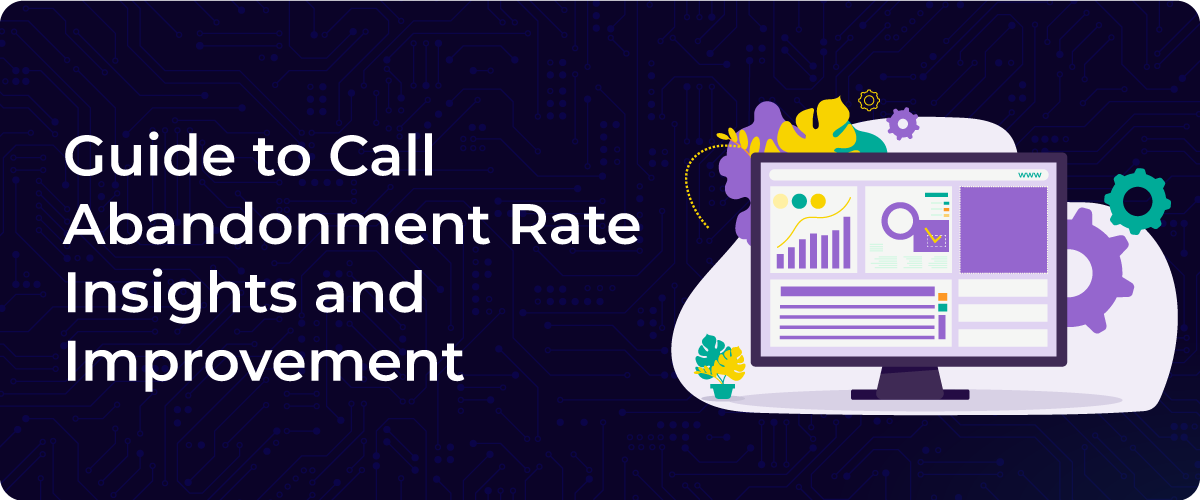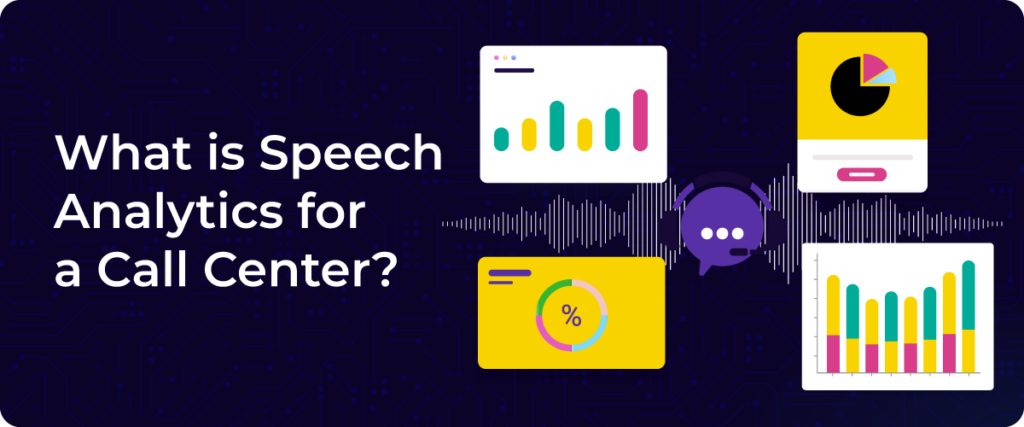
Introduction to Call Abandonment Rate
In the intricate landscape of call centres, understanding the dynamics of customer interactions is vital. Among the various metrics that offer insight into this realm, the Call Abandonment Rate stands as a significant indicator of customer experience and operational efficiency. This metric not only sheds light on customer behaviour but also guides strategies to enhance service quality. In this article, we dive into the intricacies of Call Abandonment Rate – what it entails, why it matters, how it’s calculated, and strategies to mitigate its impact.
Defining Call Abandonment Rate in the Call Center Context
Call Abandonment Rate, often referred to as CAR, is a metric that gauges the percentage of incoming calls that are terminated by the caller before being connected to an agent. It encapsulates the instances when customers decide to end the call due to extended wait times or other reasons before they can engage in a conversation with a representative. This phenomenon can be frustrating for customers and detrimental to a call centre’s efficiency and customer satisfaction.
The Significance of Monitoring Call Abandonment Rate
Monitoring Call Abandonment Rate holds immense importance as it offers insights into customer behaviour and service delivery effectiveness. A high abandonment rate can be indicative of inadequate staffing levels, inefficient call routing, or cumbersome IVR (Interactive Voice Response) systems. By keeping a close watch on this metric, call centres can identify pain points in their customer service journey and take corrective measures to enhance the overall experience.
The Science Behind Calculating Call Abandonment Rate
The Standard Formula for Call Abandonment Rate
Calculating the Call Abandonment Rate involves a simple yet powerful formula. It’s the number of abandoned calls divided by the total number of incoming calls, multiplied by 100 to express it as a percentage. This straightforward calculation offers an immediate snapshot of the rate at which customers are disengaging from the call centre before reaching an agent.
Revising the Formula: Accounting for Short Calls and IVR Interactions
While the standard formula provides a general overview, a more refined calculation may involve adjusting for short calls and interactions with IVR systems. Short calls, typically lasting only a few seconds, might indicate misdials or accidental disconnects, and factoring them out can provide a more accurate representation of abandonment. Similarly, if customers abandon calls while navigating the IVR system, these instances could be addressed separately to offer a more detailed understanding.
Common Mistakes to Avoid in Calculation
However, calculating the Call Abandonment Rate is not immune to potential pitfalls. One common mistake is including calls that were transferred to another department as abandoned calls. Such calls should be excluded as they are part of the overall customer journey. Additionally, inconsistent tracking methods or inaccurate data entry can skew the results, leading to misguided conclusions. Ensuring accurate data collection and a clear understanding of the formula is essential to avoid misinterpretation.

Industry Benchmarks and Standards
What is the Accepted Industry Standard for Call Abandonment Rate?
Benchmarking against industry standards is a common practice in evaluating performance. The accepted industry standard for Call Abandonment Rate varies based on the context and sector. In some industries, an abandonment rate below 5% is considered excellent, while in others, where customers might be more tolerant of wait times, a rate below 10% might be acceptable. However, these benchmarks are not fixed and can vary based on the unique characteristics of each call centre’s customer base.
Creating Call Abandon Curves and Predicting Rates
Advanced analytics enable the creation of call abandon curves, which map abandonment rates over different time intervals. These curves provide insights into when abandonment rates are likely to spike, allowing call centres to allocate resources strategically during peak periods. Moreover, predictive models can estimate future abandonment rates based on historical data, enabling proactive measures to manage call volume and enhance customer experiences.
Delving into the Reasons for Call Abandonment
Factors Leading to High Call Abandonment Rates
Understanding the factors contributing to high Call Abandonment Rates is pivotal in addressing the root causes. Prolonged wait times, inadequate staffing during peak hours, and inefficient call routing can all lead customers to abandon calls in frustration. By identifying these factors, call centres can tailor their strategies to create a more seamless experience and reduce abandonment rates.
The Role of IVR and Transferred Calls in Abandonment
Interactive Voice Response (IVR) systems, while designed to streamline customer interactions, can sometimes contribute to abandonment if not user-friendly or if they complicate issue resolution. Similarly, transferring calls to different departments without clear communication can lead to customer frustration, driving them to abandon the call. Ensuring IVR clarity and effective call routing can mitigate these factors.
Strategies to Reduce Call Abandonment Rate
Real-time Monitoring and Efficiency Enhancements
Real-time monitoring of call queues allows supervisors to respond swiftly to spikes in call volume and minimise wait times. Efficient call routing algorithms and skills-based routing ensure that calls are directed to the most appropriate agents, reducing the likelihood of abandonment due to transfers or prolonged hold times.
Implementing Callback Features and Optimising Agent Scheduling
Implementing callback options empowers customers to maintain their place in line without staying on hold, reducing the urge to abandon calls. Optimising agent scheduling based on historical call patterns ensures that an adequate number of agents are available during peak times, minimising wait times and abandonment rates.
Embracing Automation and Customer-Centric Strategies
Automation can handle routine inquiries, freeing up agents to focus on complex issues. Moreover, adopting customer-centric strategies, such as personalised interactions and efficient issue resolution, can enhance customer satisfaction and decrease abandonment rates.
Addressing Peak Call Times and Staffing Challenges
Predictive analytics can help anticipate call volume spikes, allowing call centres to adjust staffing levels accordingly. Additionally, cross-training agents to handle different types of inquiries enables better resource allocation during high-demand periods.

Manipulations and Misconceptions Surrounding Call Abandonment Rates
How Call Abandonment Rates Can Be Manipulated
While Call Abandonment Rates are crucial indicators, they can be manipulated if not monitored with diligence. Some tactics, such as artificially reducing wait times by prematurely ending calls or omitting certain data points, can skew the results and provide a distorted view of customer experiences.
The Importance of Authentic Data and Transparent Reporting
To ensure accuracy, it’s imperative to rely on authentic data collection methods and transparent reporting. A comprehensive understanding of the metrics being measured and the methodologies used is essential for meaningful analysis and strategic decision-making.
The Path Forward for Reducing Call Abandonment Rates
Reducing Call Abandonment Rates demands a multifaceted approach that blends technology, training, and continuous improvement. Embracing sophisticated technology, like predictive analytics and callback features, empowers call centres to manage call volumes effectively. Ongoing training equips agents with the skills to handle diverse interactions and navigate customers seamlessly through the IVR system. Ultimately, fostering a culture of continuous improvement ensures that strategies are refined over time, leading to a significant reduction in abandonment rates and an elevation of overall customer satisfaction.
Embracing Technology, Training, and Continuous Improvement
In conclusion, understanding and addressing Call Abandonment Rates is an intricate endeavour that requires a holistic approach. By embracing technology-driven solutions, providing comprehensive agent training, and committing to ongoing improvement, call centres can significantly diminish abandonment rates. Through these strategic efforts, call centres can not only enhance customer experiences but also optimise operational efficiency, solidifying their reputation as centres of excellence in customer service.
FAQs
Q1: What is Call Abandonment Rate, and why is it important?
A1: Call Abandonment Rate is the percentage of incoming calls that customers terminate before connecting to an agent. It’s crucial because it reflects customer satisfaction and the efficiency of call centre operations. High abandonment rates can indicate service issues or inefficiencies that need addressing.
Q2: How is Call Abandonment Rate calculated?
A2: The Call Abandonment Rate is calculated by dividing the number of abandoned calls by the total number of incoming calls and multiplying by 100 to express it as a percentage. It offers insight into the rate at which customers are disconnecting before reaching an agent.
Q3: What factors contribute to high Call Abandonment Rates?
A3: High abandonment rates can stem from prolonged wait times, inadequate staffing during peak hours, complex IVR systems, and ineffective call routing. Identifying these factors helps in strategizing to reduce abandonment rates and enhance the customer experience.
Q4: How can call centres reduce Call Abandonment Rates?
A4: Call centres can implement strategies like real-time monitoring, efficient call routing, callback features, optimised agent scheduling, automation, and customer-centric approaches. These measures aim to minimise wait times, improve issue resolution, and create a seamless customer journey.
Q5: Are there industry benchmarks for Call Abandonment Rates?
A5: Yes, industry standards for acceptable Call Abandonment Rates vary based on the sector. Generally, rates below 5% to 10% are considered good, but these benchmarks can differ based on customer expectations and industry norms. It’s important to tailor these standards to your specific context.


